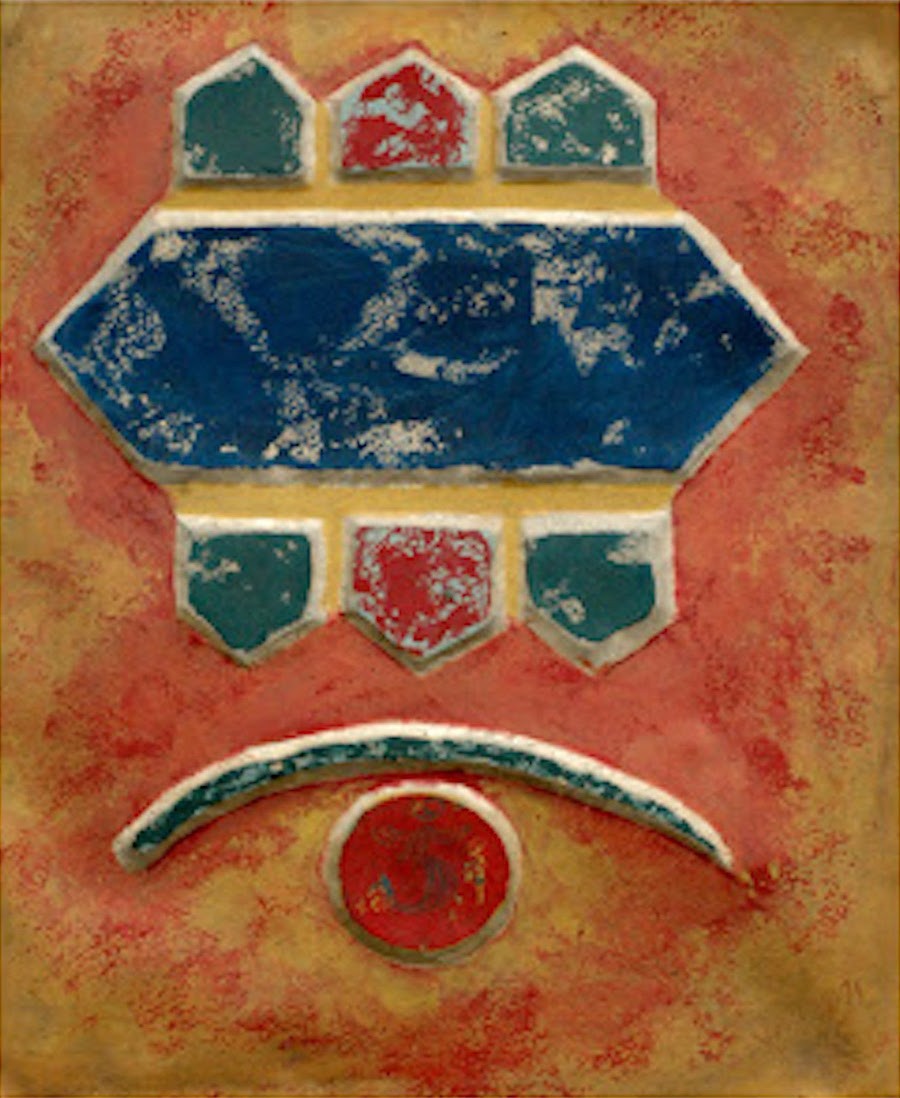Batsa Gopal
Vaidya
Ayurvedic Yantra II
Oil on embossed paper
1970

The word 'vaidya' in Sanskrit means physician. Batsa Gopal Vaidya comes from a caste of traditional healers of the Newar indigenous community in the Kathmandu Valley. His ancestors were believed to be healers of tigers and in the 20th century even served as ayurvedic physicians to the royal court of prime minister Juddha Sumsher Rana. After returning to Kathmandu from Bombay in 1970, Vaidya was conducting research for an exhibition when he came across a manuscript of shaman practices in his father’s collection.
In the manuscript, esoteric tantric practices were detailed for the creation of healing amulets and medicines. While Vaidya eschewed such rites, he appropriated images that would have traditionally been drawn to heal certain ailments; the motif used in “Ayurvedic Yantra II” intends to cure eye disorders. In this way, Vaidya underscores the aim of the modernist art movement in Nepal to root itself in indigenous traditions and simultaneously experiment with new mediums of expression.
In 1971, Vaidya co-founded SKIB-71, one of Nepal’s first modern art collectives. The group continued to exhibit till 1995, and is widely considered to be vital to the modern and contemporary art scene of Nepal.
Location Map

Designed & Developed by: Curves n' Colors | Visual identity by: Wkshps
